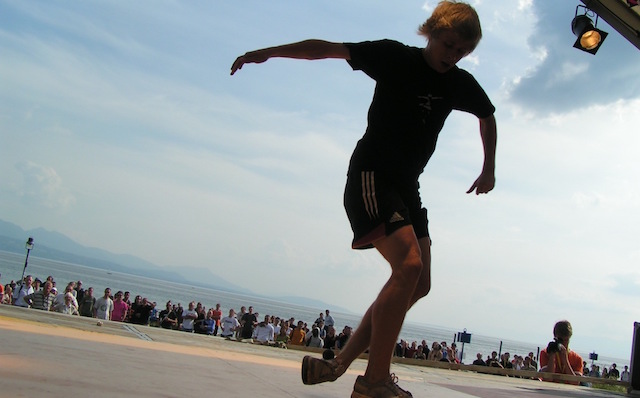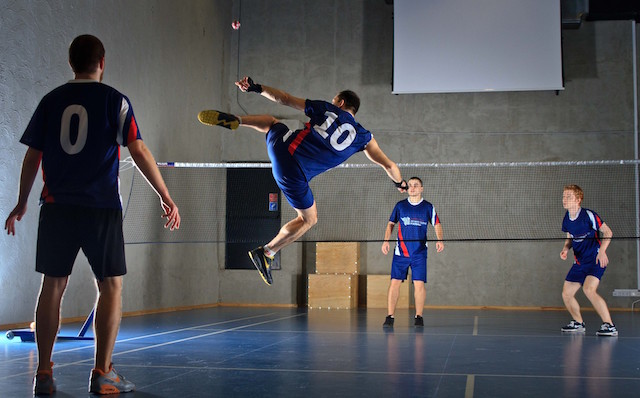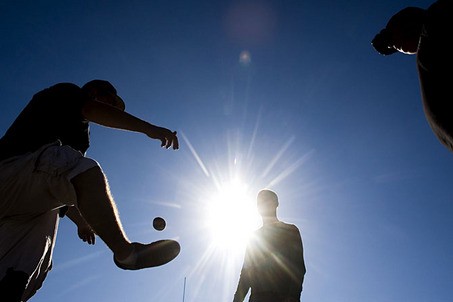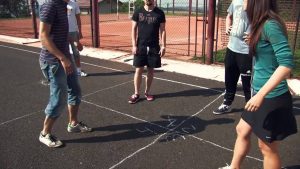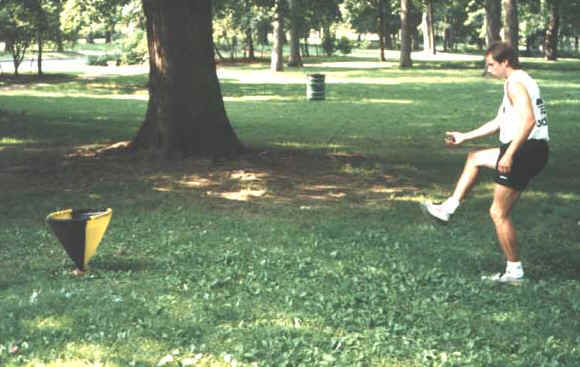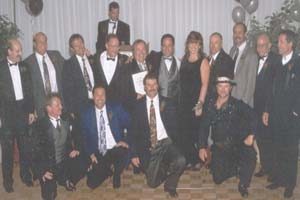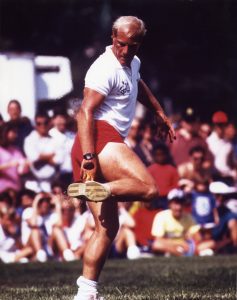IFPA
IFPA, or International Footbag Players’ Association, inc., is the international governing body of the sport of footbag, as well the official players’ association for the sport around the world. Organized as a U.S. 501(c)(3) charitable non-profit corporation, IFPA’s goals are to promote footbag as an amateur sport world-wide.
IFPA oversees and underwrites the annual championships as it moves from city to city around the world.
For more information about IFPA World Footbag Championships, check out the Worlds Operating Committee.
The International Footbag Players Association is a member-driven organization
Based on the needs of the player, IFPA has three tiers of belonging. If you are involved to the degree that you need to organize and contribute to footbag sports, then it’s free to get started for the first year with a simple one-time $10 fee for lifetime access.
Tier 0
Footbag.org Membership
FREE FOREVER
Benefits
- create and edit profile
- free e-mail alias for life
- look up other members
- post on forum
- join a club
Tier 1
Basic Voting Membership
1 Year FREE – Lifetime US $10
Benefits
- upload photos & videos
- create & join groups
- receive competition ranking
- vote in elections
- serve on committees
Tier 2
IFPA Organizer Membership
1 Year $25 – Lifetime US $150
Benefits
- create event listings
- send e-mail to announce list
- submit results
- approve Tier 1 memberships
- request event sanctioning
- receive club sanctioning
Your IFPA Board of Directors
This website is owned and operated by IFPA, which serves its core mission of providing official rules, member services, instructional materials, online communities centered around footbag, videos, photos, press releases, group collaboration tools for footbag organizers, basic reference information on the sport, online tournament registration services, club listings, event listings, mailing lists, and much, much more.
IFPA is an all-volunteer organization, meaning that no individual is paid for his or her time. All money collected through various programs (primarily through donations) is used to offset “hard costs” of the organization — internet service (disk, bandwidth, etc.), amateur competitions (especially the World Championships), printing rule books, etc., etc.
In This Section
Footbag Freestyle
Footbag Freestyle has evolved into a very technical competitive discipline.
Players compete by choreographing routines, performing very difficult combinations of footbag tricks to music (much like figure skating).
Routines are judged along four axes:
Presentation
The artistic and/or overall presentation of the routine, with a balance of the five required aspects of presentation: Music and Movement, Floor, Planes and Travel, General Form, Distribution and Linking, and Personality and Originality.[1]
Composition
The composition of the routine in terms of the technical variety executed by the player(s), as described in 504.05 Run Variety. This criterion refers to the technical “breadth” of the player(s) — how many different types of moves (from a purely technical perspective) are incorporated into the routine and successfully executed.[2]
Difficulty
The amount of technical difficulty, relative to the amount of risk, the player(s) execute within their routine. This includes both Run Difficulty and Run Density. A player who links very difficult moves continuously throughout the routine will be considered to have substantially more difficulty than a player who keeps to a few difficult moves they can hit consistently linked together by much easier moves and/or basic kicks/delays. [3]
Execution
The technical execution of the routine, taking into account general execution quality relative to a flawless technique. As defined in 504.07 Run Execution, players should consider the following three aspects of execution: Drops, Control, and Form. [4]
Other forms of competitive and non-competitive freestyle exist.
Including “shredding” in which players attempt to perform as many tricks in a row as possible, of a given add-value or above. They also attempt to show variety in their strings, along several dimensions.
In This Section
Footbag Net
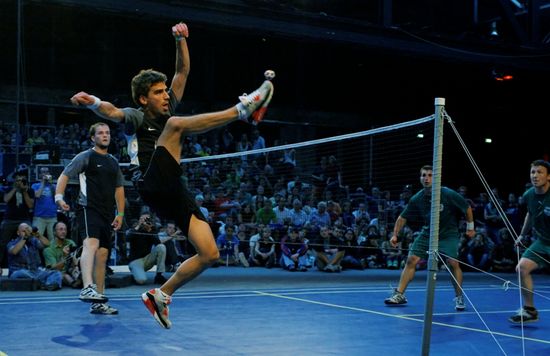
Finals at Worlds 2009 in Berlin (Germany). Patrick Schrickel / Florian Goetze vs PT Lovern / Emmanuel Bouchard.Photo by Phil Schaefer.
Footbag Net
Footbag Net is a sport governed by the IFPA‘s International Footbag Committee in which players use their feet to kick a footbag over a 5-foot-high net on a footbag net court. The rules of Footbag net are defined in the IFC’s Rules of Footbag Sports, Article 3.
Footbag net combines the coordination of soccer, the court strategy of tennis, and the set-and-spike strategy of beach-volleyball , all while using only the feet. Players demonstrate remarkable agility by spiking the footbag over the net, using either the sole of the foot, a sweeping inside kick, or an outside push. Even more remarkable than the spikes are the “digs” players use to defend against the spikes. Players also block spikes in the air with amazing foot-to-foot battles over the net.
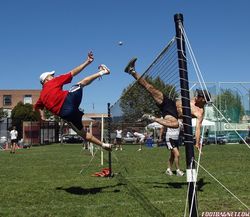
Basic Rules and Information
The full rules of footbag net are available in the online version of the International Rules of Footbag Sports.
For a basic description of the rules, see: Footbag Net Rules.
History
Footbag Net was invented in the mid 1970s. It was originally played over an 8-foot high net and players were allowed a maximum of five kicks per side. After only a few years, however, the rules of Footbag net were changed to encourage fast-paced rallying and crowd pleasing spiking maneuvers. For more net history, see The History of Footbag Net.
More about Net
In This Section
Hack Circle
Keep it in the air using only your feet. That is the game in it’s beautiful simplicity. It’s a game that’s been played with various objects in myriad cultures dating back potentially thousands of years. In it’s most recent and widespread incarnation, it started between two people, and the object they used was a small, bean-filled bag. When Mike or John wanted to play, they would call the other up and ask to go “hack the sack.”
The traditional game is played when two or more players stand in a circle and try to keep the sack (or footbag), off the ground. The game starts when one player picks up the sack and tosses it to the chest of another player, who allows it to fall to his feet so he can kick it, and play begins. Play continues until the sack falls to the ground, then a player picks up the sack and the game resumes. The object of the game is to keep the sack off the ground for as long as possible. If every player gets a touch to the sack before it hits the ground, it is called a ‘hack’. If every player gets two touches before the sack hits the ground, it is called a ‘double-hack’ and so on and so forth.
https://en.wikipedia.org/wiki/Keepie_uppie
research non-competitive cooperation … studies? Culture. Ask Sunny to write about the grateful dead; Bruce? Steal WFA history content. school tours.
Different hack games:
- Traditional
- Variations
Rules:
- No self-serves
- Feet/knees only


